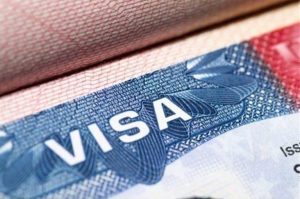What is the EB-5 Visa Program?
 In 1990, the United States Congress created the EB-5 Immigrant Investor Program. This visa category is targeted towards qualified foreign nationals seeking to obtain lawful permanent residency by investing in the U.S. economy and creating at least 10 full-time U.S. jobs. Currently, the program is administered by U.S. Citizenship & Immigration Services (USCIS). The required investment is $1.05 million, but can be reduced to $800,000 if the target investment occurs in a targeted employment area (TEA), which is defined as a rural or high unemployment area.
In 1990, the United States Congress created the EB-5 Immigrant Investor Program. This visa category is targeted towards qualified foreign nationals seeking to obtain lawful permanent residency by investing in the U.S. economy and creating at least 10 full-time U.S. jobs. Currently, the program is administered by U.S. Citizenship & Immigration Services (USCIS). The required investment is $1.05 million, but can be reduced to $800,000 if the target investment occurs in a targeted employment area (TEA), which is defined as a rural or high unemployment area.
In 1992, Congress created an additional component of the standard EB-5 program, the Regional Center Pilot Program. A Regional Center is a private or public entity designated by USCIS that is authorized to coordinate with multiple immigrant investors and to pool their investments for greater economic impact. Regional Centers are authorized to operate within defined geographic regions that require approval by the USCIS through a rigorous application process. These Regional Center geographic scopes can be cities, counties, or entire states.
There are several differences between the standard EB-5 program and the Regional Center Program. The Regional Center Program allows the use of economic modeling to determine the direct, indirect and induced job impacts related to each investor’s capital contribution. This means that in the Regional Center Program, the EB-5 participant (investor) can count direct, indirect, and induced job creation as a result of their EB-5 investment. The Regional Center operator benefits investors by conducting all the upfront due diligence, underwriting, and managing of the EB-5 investment through all stages of the investment and immigration process.
There are several steps in the EB-5 immigration process for an investor to earn a green card. Once the investor selects a regional center and project, the investor would then work with their immigration attorney to file their I-526E petition requesting conditional residency. The USCIS then reviews and determines whether the investor and qualifying family members qualify for the conditional EB-5 visa(s). This part of the process includes a detailed review of the sources of the investor’s funds, family history, and other representations of the investor and family members included in the petition. This petition, (through association to the regional center’s I-956F petition) also includes a thorough description of the EB-5 investment project and any economic models used to determine job creation. If approved (an I-526E petition approval), the investor will schedule a consular interview to then receive a conditional green card that is valid for two years. Then the investor and family would declare residency in the United States.
Near the end of the two-year period of conditional residency, the investor’s immigration attorney would file another petition with USCIS to remove their conditions (Form I-829). This petition demonstrates that the EB-5 participant’s capital was fully invested and at risk during the two-year period and that the requisite 10 qualifying jobs have been created. Upon approval of the I-829, the investor and family members become lawful permanent residents and can ultimately choose to become U.S. citizens.
The U.S. EB-5 visa is a permanent visa and requires no future re-qualification, offering more advantages and fewer constraints than any other visa program in the world. The EB-5 visa has no requirements regarding age, business training, management skills, experience, or language skills.
What are the Benefits of the EB-5 Visa?

PATH TO CITIZENSHIP
After 5 years of residency visa holders can apply for U.S. Citizenship.

RESIDENCE FLEXIBILITY
Visa holders have the freedom to live anywhere in the U.S. and there is no requirement where you have to live based on the EB-5 project’s location.
EDUCATION
Green card holders may attend U.S. schools at the same cost as citizens. The U.S. has some of the highest rated schools and universities in the world.

EMPLOYMENT FLEXIBILITY
Visa holders can work anywhere without an employer sponsor or start their own business anywhere within the U.S. 50 states and its territories.
The EB-5 Process Timeline

Due Dilligence
A potential investor interested in the EB-5 program should begin by conducting due diligence on available EB-5 projects, regional centers, and immigration attorneys. The EB-5 process takes years to complete; it is important that the investor is comfortable with their choice in all three areas.

Select an EB-5 Investment
Once the investor selects the regional center and EB-5 project, they will need to work with their immigration attorney to ensure the source of their investment funds will be acceptable to the USCIS. In CMB EB-5 Partnerships, our administrative placement agent will review the investor’s suitability and compliance with applicable securities laws. The investor will then transfer their funds.

I-526E Petition
Once subscribed to an EB-5 partnership, the investor will be able to work with their immigration attorney to file their first immigration petition with the USCIS: the I-526E petition for conditional permanent residency. The USCIS will adjudicate this petition to determine that the investor’s source of funds is acceptable, and (through association to the regional center’s I-956F petition) that the EB-5 investment is likely to meet all EB-5 requirements.

Consulate Interview
When the I-526E petition is approved, the EB-5 investor applies for conditional residency through a consulate interview (or an adjustment of status, if he or she is already in the U.S. on another visa).

Conditional Permanent Residency
Once the investor is approved for a visa and a visa is available, the investor and qualified family members are issued conditional green cards that are valid for two years. The EB-5 investor must enter the U.S. within 180 days if they are not already in the U.S. This entry into the U.S. then begins a 24 month period of conditional permanent residency.

I-829 Petition
Between months 22-24 of the EB-5 investor’s conditional permanent residency period, the investor’s immigration attorney files the I-829 petition to remove the conditions on the green card and achieve permanent residency. The USCIS will adjudicate this petition to determine that all requirements were met, and all requisite jobs were created.

Return of Capital
Requirements
- The minimum investment requirement to qualify for an EB-5 Visa is currently $800,000 when the investment is located in a Targeted Employment Area (TEA).
- An EB-5 investment must create at least 10 new full-time jobs for American workers.
- The EB-5 investment must satisfy the USCIS ‘at risk’ requirement for the duration of the immigrant investor’s two year sustainment period.
- The EB-5 investor must prove that the funds used for the investment were obtained lawfully.
- A successful EB-5 investment results in permanent residence status in the United States for the EB-5 investor, their spouse, and unmarried children under 21 years of age.
Regional Center Program vs Direct EB-5
In 1992, Congress created an additional component of the EB-5 program, the Regional Center Pilot Program. A Regional Center is a private or public entity designated by USCIS that is authorized to coordinate with multiple immigrant investors and to pool their investments for greater economic impact. Regional Centers are authorized to operate within defined geographic regions and within specific industry sectors.
There are several essential differences between direct EB-5 and the Regional Center Program. The Regional Center Program allows for the use of economic modeling to calculate the indirect and induced job creation related to all spending for each project. This means that in the Regional Center Program, the EB-5 investor can rely upon direct, indirect, and induced jobs to meet the job creation requirement of the EB-5 program.
Regional Center Program

Regional Center EB-5 investments, like those offered by CMB, usually take the form of a limited partnership. Immigrant investors pool their investment funds to either lend or make an equity investment typically for a large-scale commercial project. Regional Center investments are able to utilize economic modeling to claim direct, indirect, and induced job creation to satisfy the EB-5 requirement of 10 new American jobs per investor.
Direct EB-5 Investments

Direct EB-5 investments can only utilize direct job creation to satisfy EB-5 requirements. This means that the target project must directly support at least 10 full-time employees per EB-5 investor for a minimum of two years. A direct EB-5 investor must submit documents (payroll information and proof of citizenship) for each employee with their immigration petition. Additionally, as of 2022, a direct EB-5 investment project can only be associated with one EB-5 petition.


